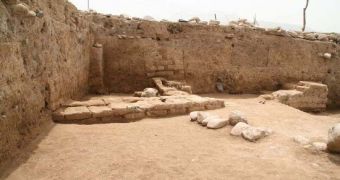Archaeologists carrying out excavations in northern Iraq have recently stumbled upon the remains of an ancient city.
Information shared with the public says that the city's remains were unearthed from under a mound on the Zab River's northern bank, in a valley in the country's Kurdistan region.
Evidence at hand indicates that, hundreds of years ago, this human community was called Idu. Live Science tells us that, although some of the artifacts unearthed at this location date back to Neolithic Times, the city appears to have reached its peak sometime 3,300 – 2,900 years ago.
Archaeologists explain that, thousands of years ago, Idu found itself under the control of the Assyrian Empire. It started to thrive when this empire began to decline, and the people inhabiting this ancient city had the chance to fight for and gain their independence.
Once freed from under the Assyrian rule, Idu appears to have experienced a boom in terms of population and economic power. Thus, it became the center of a local kingdom that existed for about 140 years.
When the Assyrians returned and reconquered the city, things took a turn for the worse.
Writing in the journal Anatolica, researchers explain that, while enjoying its independence, the ancient city of Idu came to have a fairly extravagant ruler, i.e. Ba'ilanu, who took pride in having built himself a palace greater than those his predecessors lived in.
Thus, a cuneiform inscription discovered among the remains of this city says that, “The palace which he built he made greater than that of his fathers," he claimed in the translated inscription.”
Due to the fact that a modern village now sits on top of the remains of the ancient city, it will probably be a while until archaeologists get the chance to carry out further excavations and get a better idea of what Idu used to look like.
“For wide-scale excavations to continue, at least some of these houses will have to be removed. Unfortunately, until a settlement is reached between the villagers and the Kurdistan regional government, further work is currently not possible,” said Cinzia Pappi of Germany’s Universität Leipzig, as cited by Archaeology.

 14 DAY TRIAL //
14 DAY TRIAL //